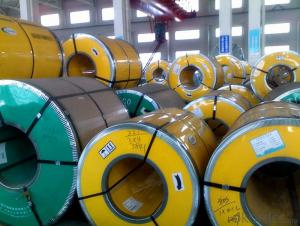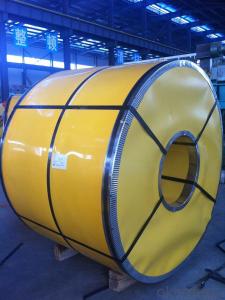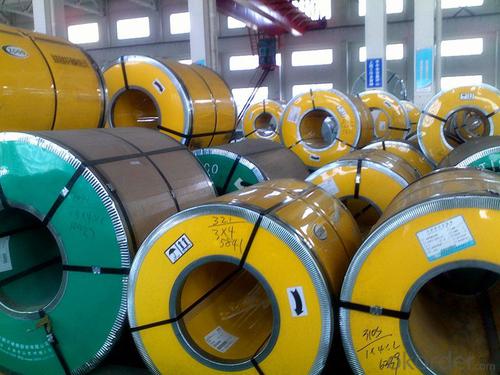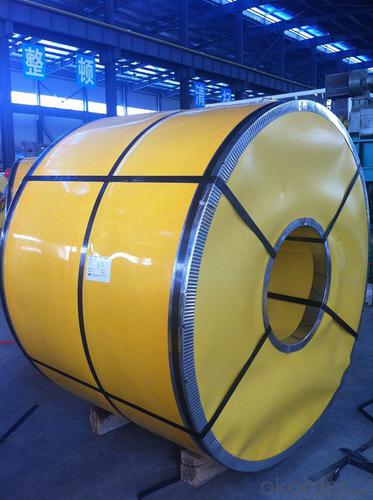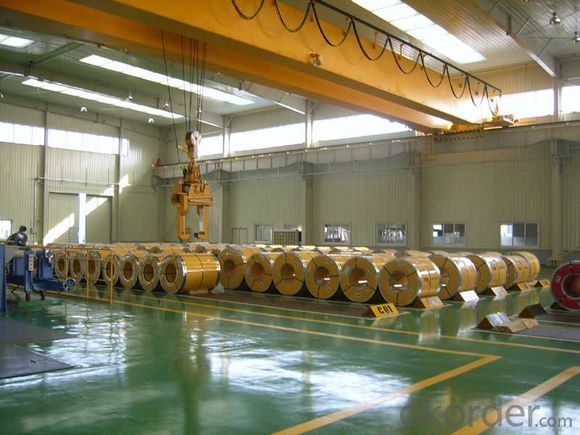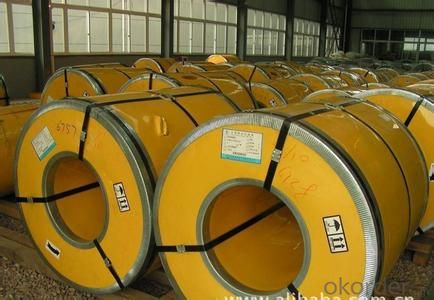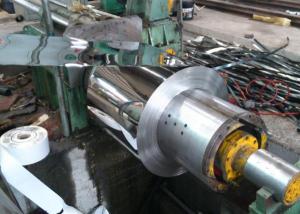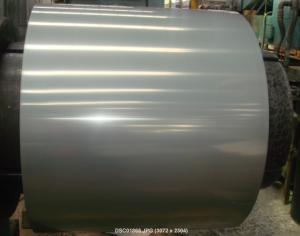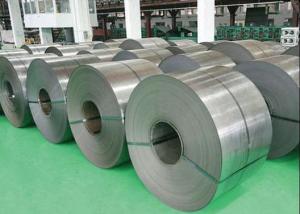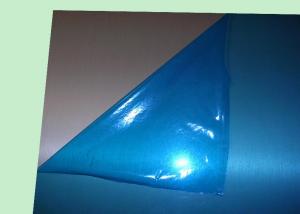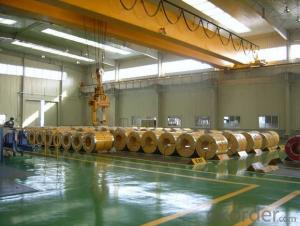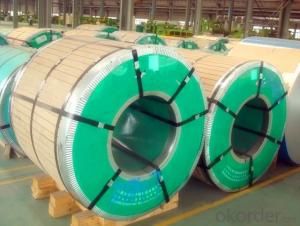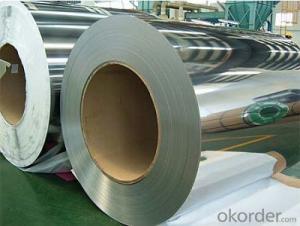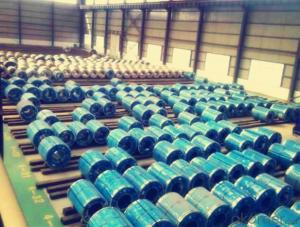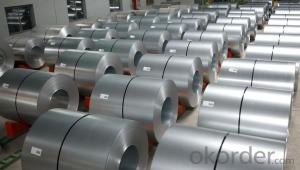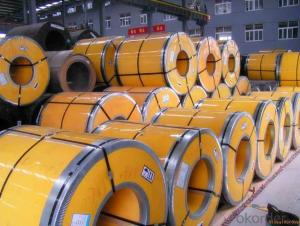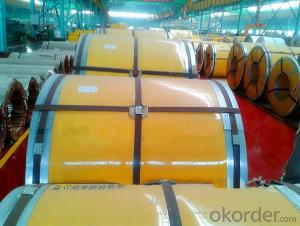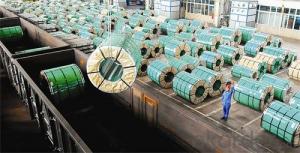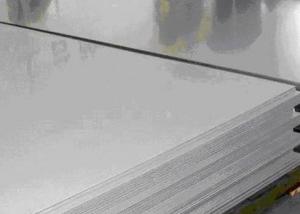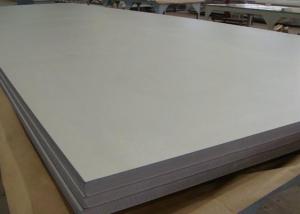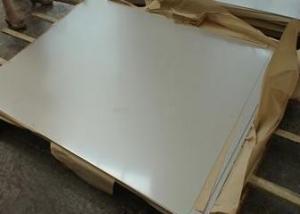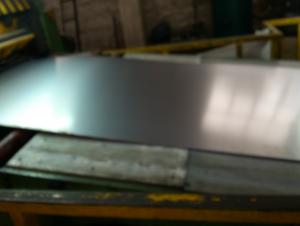Stainless Steel Coil/ Strip 304 Cold Rolled 2B Finish
- Loading Port:
- Ningbo
- Payment Terms:
- TT OR LC
- Min Order Qty:
- 100 m.t.
- Supply Capability:
- 20000 m.t./month
OKorder Service Pledge
OKorder Financial Service
You Might Also Like
Cold Rolled Stainless Steel Coil 304 Grade Narrow/Wide 2B/BA Finish
Packaging Detail: standard export packing or as customer's requirements
Delivery Detail: 7-15 days after the order
Standard: | AISI,ASTM,BS,DIN,GB,JIS | Grade: | 304 | Thickness: | 0.3-3.0mm |
Place of Origin: | China Mainland | Brand Name: | CNBM | Model Number: | 304 |
Type: | Steel Coil | Technique: | Cold Rolled | Surface Treatment: | 2B, BA |
Application: | Medical instruments, building, chemical food industry agriculture | Width: | 500-2000mm | Length: | Coil |
finish: | 2B, BA | item: | 304 cold rolled stainless steel coil | density: | 7.93 |
- Q: Are stainless steel strips suitable for HVAC systems?
- Yes, stainless steel strips are suitable for HVAC systems. Stainless steel is a corrosion-resistant material that can withstand the harsh environments and high temperatures commonly found in HVAC systems. It is durable, long-lasting, and provides excellent heat transfer properties. Stainless steel strips are often used for making ductwork, heat exchangers, and other components in HVAC systems due to their strength, resistance to corrosion, and ability to maintain cleanliness and hygiene. Additionally, stainless steel strips are easy to clean and maintain, making them a popular choice for HVAC applications.
- Q: Can stainless steel strips be used in the mining industry?
- Indeed, the mining industry can utilize stainless steel strips. Stainless steel, known for its versatility and durability, boasts exceptional resistance against corrosion, high temperatures, and mechanical strain. These remarkable properties render it well-suited for a multitude of applications within the mining sector. In mining equipment and machinery, such as conveyors, crushers, screens, and tanks, stainless steel strips find common use. They are frequently employed for lining chutes and hoppers, as well as for the creation of wear-resistant parts and components. Moreover, stainless steel strips play a vital role in the construction of mining infrastructure, including pipelines, storage tanks, and processing plants. The mining industry often operates in challenging environments, characterized by exposure to corrosive chemicals, abrasive materials, and extreme temperatures. Stainless steel's ability to resist corrosion and handle high temperatures makes it an ideal choice for applications where other materials might rapidly deteriorate. Moreover, stainless steel's ease of cleaning and maintenance is of utmost importance in the mining industry. Maintaining cleanliness is crucial for optimizing operational efficiency, reducing downtime, and ensuring product quality. In conclusion, stainless steel strips offer an effective solution for the mining industry, thanks to their corrosion resistance, high-temperature performance, durability, and ease of maintenance. Their utilization in mining equipment, machinery, and infrastructure guarantees reliability and long-lasting functionality.
- Q: Can stainless steel strips be used in wastewater treatment plants?
- Yes, stainless steel strips can be used in wastewater treatment plants. Stainless steel is a highly durable and corrosion-resistant material, making it suitable for use in environments with high moisture and chemical exposure, such as wastewater treatment plants. Stainless steel strips can be utilized in various applications within the plant, including piping, tanks, screens, and other equipment. Additionally, stainless steel's resistance to bacterial growth and ease of cleaning makes it a hygienic choice for use in the treatment of wastewater.
- Q: Can stainless steel strips be used in automotive body panels?
- Yes, stainless steel strips can be used in automotive body panels. Stainless steel is a versatile and durable material that offers excellent corrosion resistance, high strength, and a sleek appearance. These properties make it suitable for use in automotive applications, including body panels. Stainless steel strips can be shaped, welded, and formed into different panel designs, allowing for flexibility in design and customization. Additionally, stainless steel's resistance to rust and oxidation makes it ideal for withstanding harsh outdoor conditions and road salt exposure, which are common in automotive environments. Overall, stainless steel strips provide a reliable and long-lasting solution for automotive body panels.
- Q: Can stainless steel strips be used in nuclear power plants?
- Stainless steel strips are indeed applicable for utilization in nuclear power plants. Due to its exceptional resistance against corrosion, high strength, and heat resistance properties, stainless steel is widely employed in the construction of nuclear power plants. It finds application in numerous areas such as the manufacturing of reactor vessels, steam generators, piping systems, and various other components. The choice of stainless steel in these settings is due to its ability to endure the severe conditions and elevated temperatures associated with nuclear power generation. Furthermore, stainless steel exhibits a high level of resistance to radiation damage, which makes it an ideal material for use in nuclear power plants.
- Q: Can stainless steel strips be used in the chemical processing industry?
- Yes, stainless steel strips can be used in the chemical processing industry. Stainless steel is known for its excellent resistance to corrosion, making it a suitable material for handling various chemicals. It is highly durable, heat resistant, and can withstand high-pressure environments, which are common in chemical processing operations. Additionally, stainless steel strips can be easily formed into different shapes and sizes, allowing for flexibility in design and construction of chemical processing equipment. Overall, stainless steel strips are a reliable and efficient choice for the chemical processing industry.
- Q: Are stainless steel strips resistant to humidity?
- Stainless steel strips demonstrate resistance to humidity. This is due to the exceptional corrosion resistance of stainless steel, which encompasses its ability to withstand humidity and moisture. The inclusion of chromium in stainless steel generates a protective layer on the surface, preventing oxidation and corrosion. As a result, stainless steel strips exhibit high resistance against the impacts of humidity, rendering them a suitable option for a range of applications in humid settings, including kitchen appliances, outdoor structures, and industrial equipment. However, it should be noted that extended exposure to exceedingly high humidity or corrosive environments may still lead to some degree of corrosion, although it would be significantly less when compared to other materials.
- Q: What kind of plastic surface friction and wear in stainless steel belt is relatively small?
- Plastic itself than metal soft, so it is not bad stainless steel, and if the metal surface smoothness is low (micro Burr) will be broken plastic surface, in the contact surface, if there are hard particles will also be broken metal surface.
- Q: What is the fatigue strength of stainless steel strips?
- The fatigue strength of stainless steel strips can vary depending on various factors such as the specific grade of stainless steel, the surface condition, and the manufacturing process. However, in general, stainless steel is known for its high fatigue strength compared to other materials. Stainless steel strips are commonly used in applications where they are subject to cyclic loading or repetitive stress, such as in the automotive, aerospace, and construction industries. The fatigue strength refers to the maximum stress level that a material can withstand for a specific number of cycles without failure. The fatigue strength of stainless steel strips is typically evaluated through fatigue testing, where a strip specimen is subjected to repeated loading and unloading cycles until failure occurs. The results are then used to determine the endurance limit or fatigue limit of the material, which represents the stress level below which the material can withstand an infinite number of cycles without failure. Depending on the grade of stainless steel, the fatigue strength can range from 150 to 500 megapascals (MPa). However, it is important to note that the fatigue strength can be influenced by various factors including the surface finish, presence of any defects or notches, temperature, and environmental conditions. In conclusion, stainless steel strips generally have high fatigue strength compared to other materials. The specific fatigue strength can vary depending on the grade of stainless steel and other factors, and it is typically determined through fatigue testing.
- Q: Can stainless steel strips be used in the production of jewelry findings?
- Yes, stainless steel strips can be used in the production of jewelry findings. Stainless steel is often used in jewelry making due to its durability, corrosion resistance, and affordability. It can be formed into various shapes and sizes, making it suitable for creating findings such as clasps, jump rings, earring hooks, and more.
Send your message to us
Stainless Steel Coil/ Strip 304 Cold Rolled 2B Finish
- Loading Port:
- Ningbo
- Payment Terms:
- TT OR LC
- Min Order Qty:
- 100 m.t.
- Supply Capability:
- 20000 m.t./month
OKorder Service Pledge
OKorder Financial Service
Similar products
Hot products
Hot Searches
Related keywords
